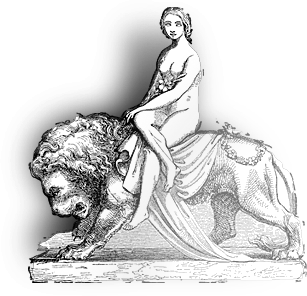Association Join Models in Rails
As I re-learn Rails, I'm documenting concepts that seem different to me coming from a Cocoa/Core Data background. Association join models don't exist at the modeling level in Core Data.The idea is essentially that you're taking a relationship that's two degress of separation and shortening it to just one. The Rails Wiki uses the example of three Entities:
Catalogue <-->> CatalogueItem <--> ProductTypically, to get all of the Product instances in a Catalogue, you'd do this:
catalogue.catalogue_items.collect{|item| item.product}However, if you use the :through bit, you can access the products directly:
class Catalogue < ActiveRecord::Base
has_many :catalogue_items
has_many :products, :through => :catalogue_items
endMeaning you can do this:
catalogue.productsIn Core Data, I think you'd just do this with a custom accessor, or possibly a fetched property. Here's another example (also a Scott, but not me) of how this construct saves you from dropping down to SQL for some searches.

Association Join Models in Rails
Posted Dec 29, 2006 — 3 comments below
Posted Dec 29, 2006 — 3 comments below








Chris Hanson — Dec 30, 06 2955
If you actually need to model a relationship via a separate entity, on the other hand, you'll have to model that explicitly. To provide a way of accessing the objects on the other side of that relationship, you can use transient relationships with accessor methods that do the heavy lifting. However, these transient relationships can only be used with in-memory queries; queries that don't cause full managed objects to be created won't be able to use them.
James Randall — Dec 30, 06 2956
Scott Stevenson — Dec 30, 06 2957
I'm still new at Rails concepts, but I'm not sure this really covers the whole picture. Rails natively supports many-to-many inverse relationships. In the O'Reilly book they use the example of photos and categories:
has_and_belongs_to_many :photos has_and_belongs_to_many :categoriesWhich allows you you do things like this:
category.photos << new_photo photo.categories << new_categoryThe join table is handled transparently, just as in Core Data (other than the fact that you have to create the migration).
In the same book, the association join models come into play when the Slideshow, Slide, and Photo classes are used together. A Slide has a belongs_to relationship to both Slideshow and Photo.
A Slide is more than just a simple join because it maintains information about a Photo which is specific to a Slideshow. In other words, the Slide could maintain a caption but have its Photo reference change. An association from Slideshow to Photo using :through is just a convenience.
The example on this page gives a better example. Let me know if you still think the original point is valid. I'd be curious to know if I'm missing something about Rails here.